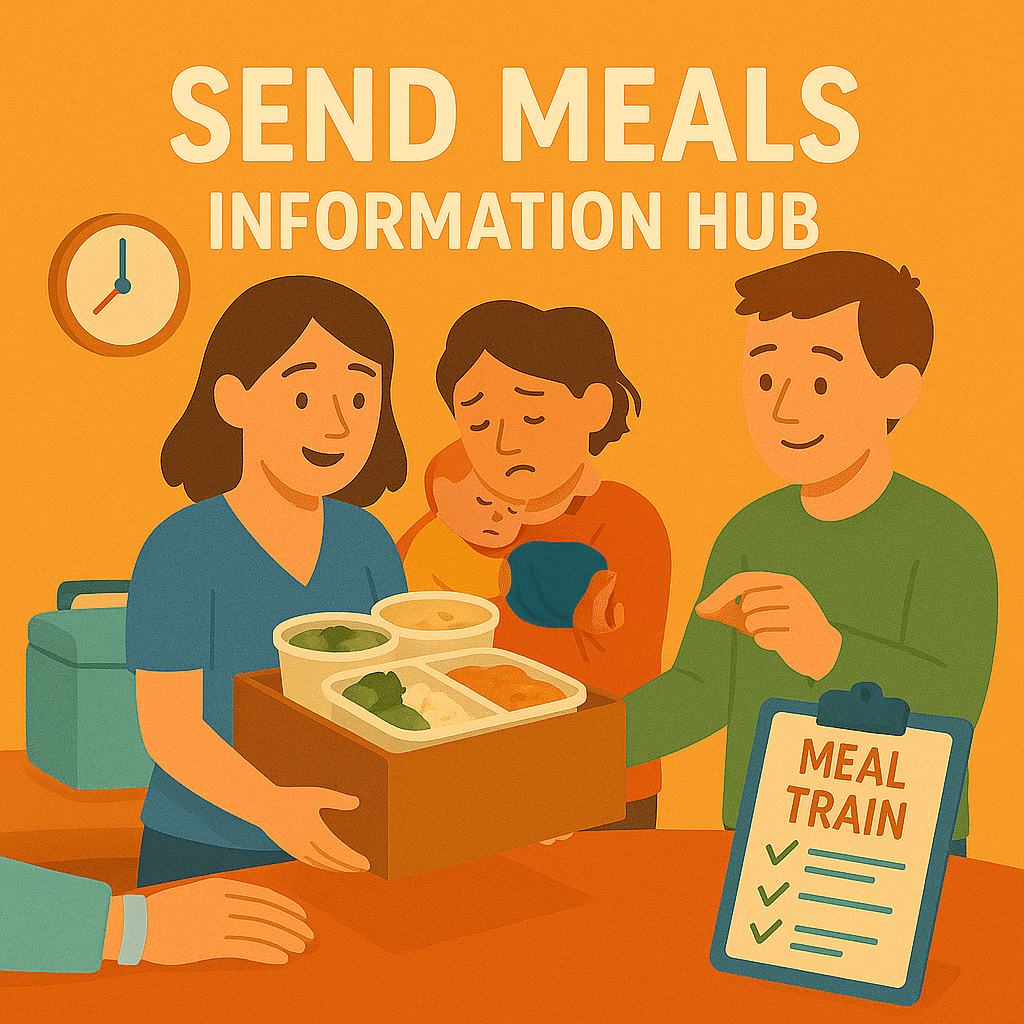The Definition Of Comfort Food
Send Meals Information Hub
A meal train is one of the most tangible and comforting ways people can show up during a tough time. But without a clear system, it can turn into a scheduling mess. This guide helps you organize a smooth and thoughtful meal train that works for both the family and the friends who want to help, with no duplicate dinners or last-minute scrambles.

Key Things To Know
When someone is grieving, recovering, or caregiving, cooking becomes one more task on an already full plate. Sending meals is a thoughtful and practical way to show you care.
-
Find out dietary needs: Before sending anything, ask about allergies, restrictions, and preferences. It shows respect and ensures your meal will actually be helpful.
-
Keep it simple and comforting: Choose meals that are easy to reheat, familiar, and nourishing. Now’s not the time for experimental dishes.
-
Label everything clearly: Include the name of the dish, date prepared, and reheating instructions. If it’s freezer-friendly, say so.
-
Use disposable containers: This removes the burden of returning dishes and makes cleanup easier for the person or family receiving the meal.
-
Coordinate timing and drop-offs: A meal calendar helps avoid duplicates or too many meals on the same day. It also gives people a way to plan ahead.
-
Consider gift cards or delivery: If you’re not local or unsure what to send, a gift card to a local restaurant or meal delivery service is a great option.
-
Think beyond dinner: Breakfast foods, snacks, or pantry staples can be just as useful. A few grab-and-go items can make busy or emotional days easier.
-
Add a personal touch: A short note, favorite dessert, or small treat can turn a meal into a true act of care and connection.
Support Options & Resources
These meal coordination tools make it simple to organize drop-offs, share dietary needs, and ensure the right support shows up at the right time.
Frequently Asked Questions
Dropping off dinner sounds simple, but there’s more to it than just showing up with a casserole. These FAQs will help you make the gesture count.
Disclaimer: The information provided on this website and by Buried in Work is for general informational purposes only and should not be considered legal advice. Please consult with a qualified attorney or subject matter expert for advice specific to your situation.
